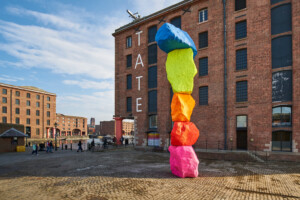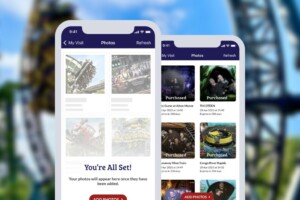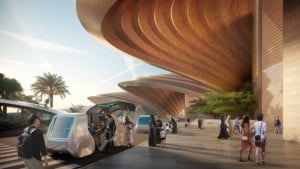By Mira Cohen.
I saw:
- Fifth graders creating podcasts based on interviews and photos of their trip to Sacramento.
- A middle school media class working in collaborative groups to create short films which were then transferred into the English teacher’s classroom where the same students were then guided through the creation of scripts for the their films.
- Second graders creating digital storyboards.
Neat stuff.
My initial impulse was parental: to find a way to pick up and move to Fullerton, CA so my own kids could attend a school that integrates the collaborative use of technological tools seamlessly into established curricula. Then I put on my professional museum educator’s persona, and began to muse about the impact of sophisticated, creative and technologically advanced techniques in formal education on museums and other forms of informal education.
What is the role of the class field trip, or for that matter, the family museum visit when learning at school is cool?
What do museums have to offer? Do museums need to move backward or forward to meet the needs of digital kids? Do we need to:
a. Move backward to the days when museums acted purely as repositories for the displays of selected collections of objects and artifacts?
b. Focus on staying ahead of the technology game by integrating bigger, more exciting, more exceptional uses of technology that are not integrated into school and daily life?
c. Both a and b?
You probably guessed that my favorite choice is “c.” You may choose, of course, to:
a. agree b. disagree c. re-write the question
In a digital age, museums have an opportunity to play what may seem like two opposing roles that actually fit together.
1. Authenticity role. As more information is instantly available, museums house the real deal and have an opportunity to create and meet a growing need to experience in person objects and artifacts that have been digitally experienced.
Kids want a satisfying answer to the question “Is it real?” whether it’s Spock’s costume, Dorothy’s Ruby slippers, a moon rock, a Picasso painting, or a Dead Sea Scroll (right). There is still something profoundly meaningful about an object that has been saved, preserved, studied, respected, admired, or condemned for its original purpose – five years ago or 5, 000 years ago. Any ten year old knows. Real dinosaur bones are real and fake ones are fake. And they all want to see the real ones. It matters. It just feels different.
Who has interpreted it? Why has it been considered important? Who should interpret it? Who contributes to the debate? These are important but different questions.
Is it “real” still comes first.
2. Can’t-get-it-at-home role. By the same token, when digital kids experience technology in a public space; they will expect to get something different than what they can get at home, at school, or at their fingertips just about anywhere.
New ways of utilizing technology to enliven and enhance the story will pull young visitors into the museum. This is the summer blockbuster effect.
While the two roles may seem disparate, what they have in common is that they both allow museum visitors to gain experiences they cannot have outside of a brick-and-mortar museum.
Now is the time to seize the opportunity to draw upon the most awe inspiring artifacts from the past, the creative energy of the present and the tools of the future to develop meaningful and uniquely 21st century museum experiences.
Images:
1. Bottom left – A segment of the Dead Sea Scrolls- Book of War- 11Q14, Scroll type: Non-biblical text, Date: 1st century CE (20-50 CE), Language: Hebrew, Discovered: Cave 11, 1956. – Photo courtesy of the Israel Antiquities Authority
2. Top right – probably not Mira Cohen.
Bridging the History/Art Divide: The Multi-Disciplinary Museum of the Future
Themed Attractions: Visitors are Immersed, Educated and Engaged at Air Force One Discovery Center








